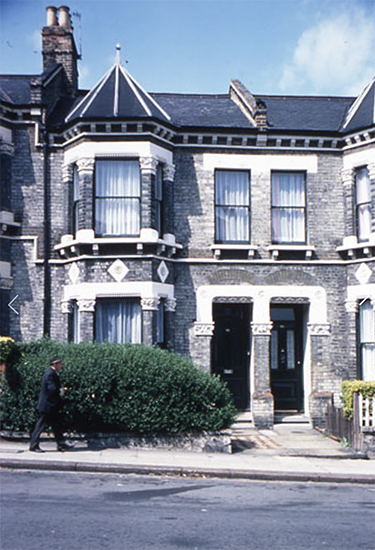Technical Specs

The intention is that photographs (35 mm transparencies) be taken at twenty locations each year between May 24 and June 2. The locations are situated on what is (in 1973) the nearest walkable route to a perfect circle a half a mile in radius from the point in the home of Artist 1 (102 Grove Park, London SE5) where the project was devised and where these instructions were written. The circuit is divided into sixteen equal sections in each of which there is a site selected by Artist 1. Four other locations mark the route from the centre to the circumference: these are the former studio of Artist 1, his current home and studio, and the art school where he studied. The project book notes the times of the original photographs of 1973 and these should be adhered to as closely as possible (though all photos need not necessarily be taken on the same day) Artist 1 intends that the pictures should be taken by his family and their descendants, if they are willing, and that the work should thus go on indefinitely: the services of their friends may be enrolled or even from time to time that of professional photographers. Continuity is the most important factor.
At least three photographs should be taken of each location each year.
The equipment to be used is a Praktica 35 mm LT camera with a semi-wide-angle Soligar lens plus lens hood. This equipment should be handed down with the assignment and cared for with a view to its lasting as long as possible. Even if the whole practise of recording images by such means seems ridiculous, antiquarian and quaint, the succeeding Artists are urged to eschew possible improvements and to carry on with the equipment given, ignoring the absurdity of their anachronistic technique just as they should ignore any fashion in art that would seem to make the project itself absurd.
Accessories like lightmeter batteries should be stockpiled if they seem in danger of becoming unavailable.
The film used is Kodachrome X (ASA/BS 64: 19 DIN) positive colour film: this should also be adhered to. As films change the nearest to the above should be ascertained: if they change very radically an attempt should be made to have a film specially manufactured to the original specification.
The three slides of each site should be stored with those of previous years: a print should be made of the best slide of each location and the most recent print should be inserted in the project book as a guide for the next year and as a comparison with the print of that location in 1973 (which should remain in the book).
All the photographs were taken by Artist 1 at a speed on one sixtieth of a second at the aperture indicated by the automatic device (although the bottom of the indicator circle was used as a guide rather than the centre since there seemed to be a tendency towards over-exposure) and with the distance scale set at infinity. They were all taken, standing up, at eye level (that of a man 5 feet 9 inches tall) and adjustment should be made to make this height constant. The viewfinder image should be compared to the previous print in the project book and matched as closely as possible for alignments and common features. If no common features persist from one year to the next the approximate compass direction in the project book should be taken as a guide.
The small hand-drawn maps of the standing positions should be kept up to date and variations noted. At each site Artist 1 has sprayed paint to indicate the position of the feet, using a car spray aerosol: these marks, when they survive the year, are the most reliable indicators of the exact position from which to photograph.
If it should become physically impossible to stand at the position noted the Artist must use his own discretion in deciding whether a relevant photograph can be taken (I. e. if it only involves a displacement by a few inches) or whether the site should be abandoned. If the latter, that location should be regularly reexamined to see whether resumption is possible).
The subtitle OBART given to the project derives from the enigmatic notice featured in the original photograph of site no. 15.